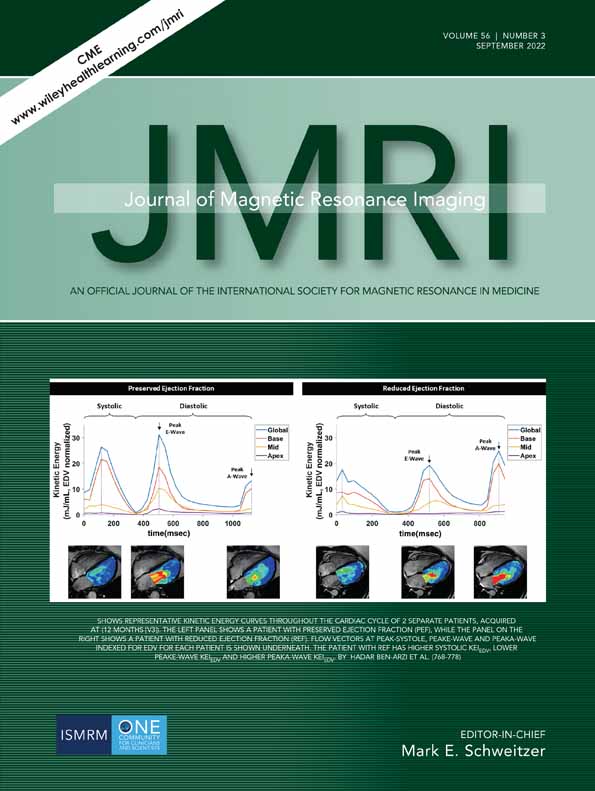Multi-Planar, Multi-Contrast and Multi-Time Point Analysis Tool (MOCHA) for Intracranial Vessel Wall Characterization
Abstract
Background
Three-dimensional (3D) intracranial vessel wall (IVW) magnetic resonance imaging can reliably image intracranial atherosclerotic disease (ICAD). However, an integrated, streamlined, and optimized workflow for IVW analysis to provide qualitative and quantitative measurements is lacking.
Purpose
To propose and evaluate an image analysis pipeline (MOCHA) that can register multicontrast and multitime point 3D IVW for multiplanar review and quantitative plaque characterization.
Study type
Retrospective.
Population
A total of 11 subjects with ICAD (68 ± 10 years old, 6 males).
Field Strength/Sequence
A 3.0 T, 3D time-of-flight gradient echo sequence and T1- and proton density-weighted fast spin echo sequences.
Assessment
Each participant underwent two IVW sessions within 2 weeks. Scan and rescan IVW images were preprocessed using MOCHA. The presence of atherosclerotic lesions was identified in different intracranial arterial segments by two readers (GC and JS, 12 years of vascular MR imaging experience each) following an established review protocol to reach consensus on each of the reviews. For all locations with identified plaques, plaque length, lumen and vessel wall areas, maximum and mean wall thickness values, normalized wall index and contrast enhancement ratio were measured.
Statistical Tests
Percent agreement and Cohen's κ were used to test scan–rescan reproducibility of detecting plaques using MOCHA. Intraclass correlation coefficient (ICC) and Bland–Altman analysis were used to evaluate scan–rescan reproducibility for plaque morphologic and enhancement measurements.
Results
In 150 paired intracranial vessel segments, the overall agreement in plaque detection was 92.7% (κ = 0.822). The ICCs (all ICCs > 0.90) and Bland–Altman plots (no bias observed) indicated excellent scan–rescan reproducibility for all morphologic and enhancement measurements.
Data Conclusion
Findings from this study demonstrate that MOCHA provides high scan–rescan reproducibility for identification and quantification of atherosclerosis along multiple intracranial arterial segments and highlight its potential use in characterizing plaque composition and monitoring plaque development.
Evidence Level
4
Technical Efficacy
Stage 2




